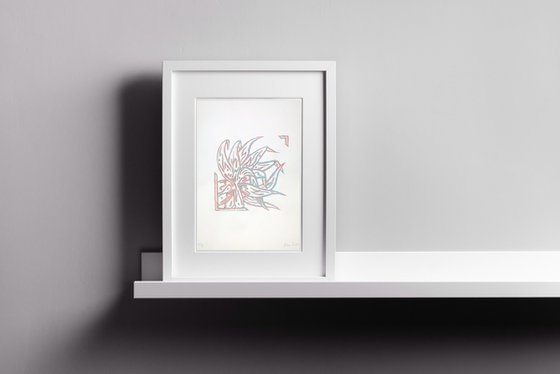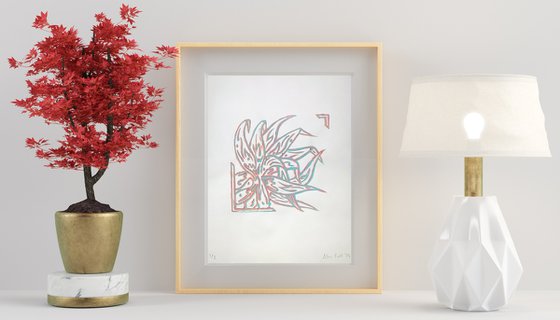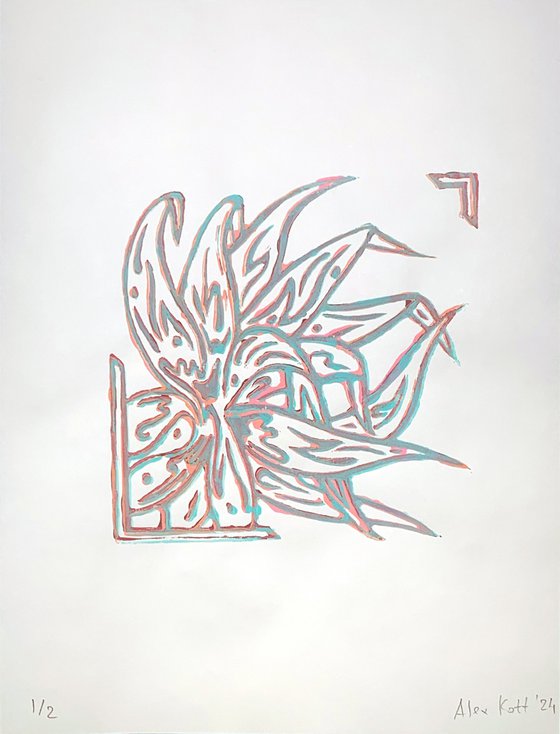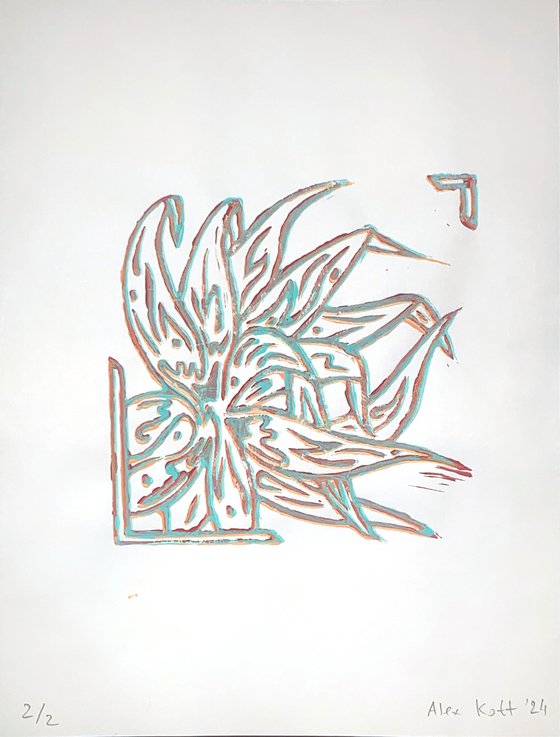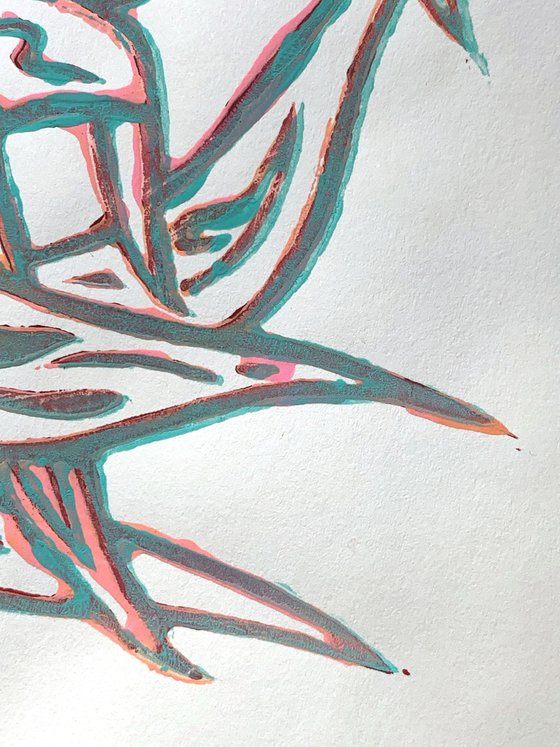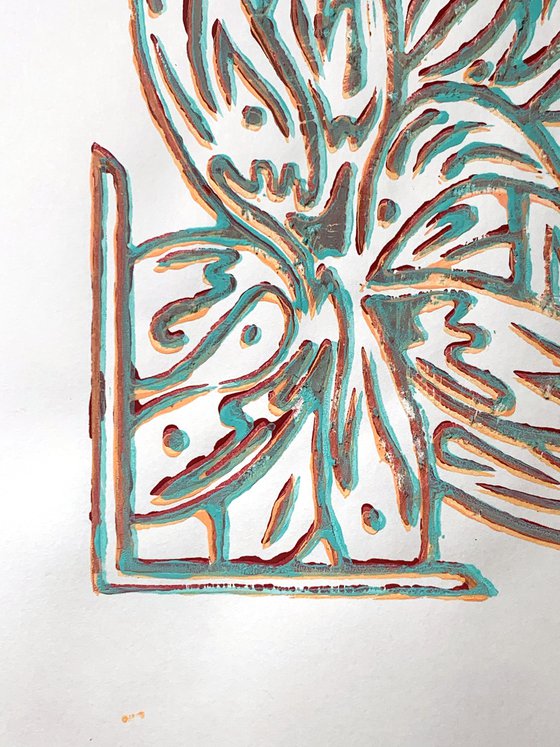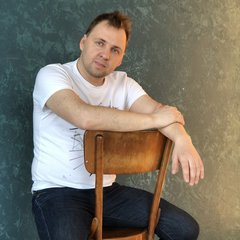- By medium
- By subject
- By budget
- Sales
- Gift cards
- Discover all art
- Artists
- Editors’ picks
- Ideas
Artwork description:
Series: «Linocuts»
9х12 inches
linocut on paper
acrylic
2024
---
Number of items in limited edition - 2
---
The initial simplicity of a linocut – a simple print on paper – is deceptive. It's not just a drawing transferred onto paper; it's immediately three forms of art. Initially, you make numerous pencil sketches on paper, attempting to fit a complete statement of a large canvas into a tiny area.
And yes, this process can now be easily automated by asking AI to draw the desired picture. But no matter how you twist it, it will be noticeable: too good, too accurate, lacking the individual characteristics of a living author. AI will never have its own unique style because it's one for all, only with different settings but with a single database of source images – from masterfully executed works of classics to naive, carefully but unskillfully made children's drawings.
The second stage: you recreate your small picture. Drawing it with a sharp, metallic tool, on a special base – a matrix. And this object you're working on starts living its own special life. Lines intertwine contradicting the source, and you see real volume, not a flat sheet of paper. You must leave untouched what will later leave an impression on paper. You draw a picture that will never be drawn again! Yes, it's a new, independent work that only the artist sees.
The final stage – the print. No, it's not just an office stamp. The ink is applied unevenly, like the pressure of the brush on canvas changing the stroke's thickness, like the blending of shades giving new meaning. Here, the carved matrix is a sophisticated brush, with which you need to delicately draw a new picture. And yes, there will never be a second one, 100% identical.
Materials used:
acrilic
Tags:
#abstract #graphic #miniature #paper #home decor #red and #floral art #linocut flower #simple artwork #garden herbRed-blue flower, orange shadow (2024) Linocut
by Alex Kott
1 Artist Reviews
£48.63
- Linocut on Paper
- From a limited edition of 2
- Size: 22.86 x 30.48 x 0.03cm (unframed) / 22.86 x 30.48cm (actual image size)
- Ready to hang
- Signed and numbered on the front
- Style: Abstract
- Subject: Flowers and plants
- Hurry only 1 left in stock
Loading
Artwork description
Series: «Linocuts»
9х12 inches
linocut on paper
acrylic
2024
---
Number of items in limited edition - 2
---
The initial simplicity of a linocut – a simple print on paper – is deceptive. It's not just a drawing transferred onto paper; it's immediately three forms of art. Initially, you make numerous pencil sketches on paper, attempting to fit a complete statement of a large canvas into a tiny area.
And yes, this process can now be easily automated by asking AI to draw the desired picture. But no matter how you twist it, it will be noticeable: too good, too accurate, lacking the individual characteristics of a living author. AI will never have its own unique style because it's one for all, only with different settings but with a single database of source images – from masterfully executed works of classics to naive, carefully but unskillfully made children's drawings.
The second stage: you recreate your small picture. Drawing it with a sharp, metallic tool, on a special base – a matrix. And this object you're working on starts living its own special life. Lines intertwine contradicting the source, and you see real volume, not a flat sheet of paper. You must leave untouched what will later leave an impression on paper. You draw a picture that will never be drawn again! Yes, it's a new, independent work that only the artist sees.
The final stage – the print. No, it's not just an office stamp. The ink is applied unevenly, like the pressure of the brush on canvas changing the stroke's thickness, like the blending of shades giving new meaning. Here, the carved matrix is a sophisticated brush, with which you need to delicately draw a new picture. And yes, there will never be a second one, 100% identical.
Materials used:
acrilic
Tags:
#abstract #graphic #miniature #paper #home decor #red and #floral art #linocut flower #simple artwork #garden herb14 day money back guaranteeLearn more
